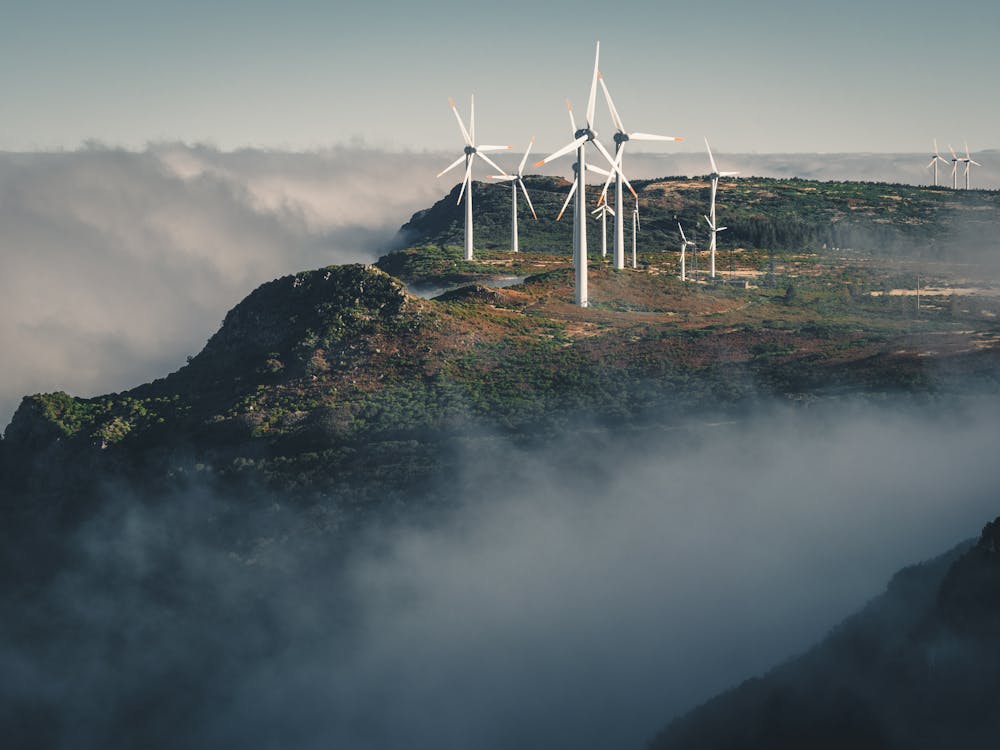The use of geothermal sources has been consistently expanding as a sustainable alternative for energy generation ever since it was used in 1904 in Italy for the first time. Statistics by the International Renewable Energy Agency (IRENA) reveal that geothermal has grown steadily to over 15GW, with projections showing nearly double installed capacity by 2030.
So, What’s Geothermal Energy, How Does It Work, And Why Does It Matter?
Geothermal sources are sustainable, affordable, and clean means of producing energy. They utilize the energy derived from the Earth’s heat and can be harnessed for powering several applications. Thermal energy is contained in rocks and fluid beneath the Earth’s crust and can be found from several miles below the surface to shallow ground.
Deep wells are drilled into underground reservoirs to tap scalding water or steam that drives the turbines linked to generators that produce geothermal electricity. Geothermal plants can be flash, dry steam, and binary. While all geothermal power plants operate on the same basic principle, i.e., using steam to spin turbines to generate electricity, there are some differences you should know to make an informed decision. .
Dry Steam Plant
Dry steam plants use steam extracted from reservoirs beneath the Earth’s crust through a production well that helps the turbines spin. Once electricity is generated, the steam condenses into water, which is then driven back to the surface through injection wells. These geothermal power plants are known as ‘dry’ steam because the water extracted from the Earth is in the gas form, not as a direct liquid out of the production well.
Flash Steam Plant
This type of plant does not use steam from the earthy directly to produce electricity. Instead, it pumps warm water underground at very high pressure through a production well into what’s known as a flash tank that’s kept at a relatively lower pressure.
With the flash tank’s pressure being low, the high-pressure, hot water in the tank quickly turns to steam and spins turbines that generate electricity. This process is known as flashing.
Just like the dry steam counterpart, the steam condenses into water after power generation. It’s returned to the surface through injection wells previously used for spinning turbines.
Binary Cycle Plant
Binary power plants utilize water at lower temperatures, usually less than 18 degrees Celsius. Rather than using water or steam directly, binary power plants use the warmth from underground reservoirs to heat the working fluid. This second fluid then vaporizes to spin the turbines that generate electricity. Even in binary plants, the water returns to the Earth through injection once the working fluid is heated.
Geothermal energy comes with many benefits. It allows energy to be extracted without burning scarce and harmful fossil fuels. In fact, geothermal fields produce less than one-sixth of the carbon dioxide than fossil fuel-powered electricity generation plants, especially binary cycle plants that release virtually zero emissions.
Moreover, thermal sources are available throughout the year and are relatively inexpensive—savings from continuous use can be as much as 83% over fossil fuels. Here are a few things you should know about geothermal power to make an informed decision when streamlining sustainable energy solutions.

#1- The Applications of Geothermal Aren’t New, but There’s A Renewed Interest
The Paris Agreement (2015) led to many nations worldwide committing to undertake initiatives toward emission reduction, carbon reduction, and increased use of sustainable energy by 2050. The pressure of choosing environmentally friendly practices coupled with increased government support has enabled the development of geothermal energy production, directly impacting new technology and product development. Even oil and gas industry experts are embracing geothermal energy for pumping, drilling, and transporting the fuel source due to its sustainability, cost-effectivity, and efficiency.
#2- Geothermal Energy has One of the Lowest Carbon Footprints
Geothermal energy has one of the least environmental impacts because of its relatively low drilling level compared to alternative extractions. Besides, geothermal power doesn’t require further processing or transportation, so there is no heavy industrial production or traffic flow. Besides the one-time investment to set up the plant, electricity generation is inexpensive and contributes less to general air pollution or global warming than fossil fuels.
#3- Baseload Energy—Geothermal is Always On
Contrary to popular belief, geothermal power plants produce consistent electricity that can be used 24 hours a day, seven days a week. The plant’s power output is highly stable and predictable, facilitating energy planning with phenomenal accuracy. Many industries rely on geothermal plants as an excellent source of meeting baseload energy demands or the minimum demand levels on electrical grids during the day in remote areas.
#4- Geothermal Energy Can Cool, Heat, and Generate Electricity
Depending on the technology chosen, geothermal energy can be used in various ways in diverse industries, including the oil and gas industry. A major opportunity exists within the sector in the form of unproductive or abandoned oil and gas wells.
Those wells can be viably repurposed to generate electricity from the heat resources beneath the Earth to retire the exhausted fossil fuel resources safely. It could also offer a route into green employment with gas and oil industry workers using the sustainable energy solution in their operations.
Get Started on Complete Energy Solutions with CNPS

CNPS offers high-quality renewable energy solutions, including offshore and onshore wind power equipment, geothermal energy solutions, and non-metallic solutions, like fiberglass solutions, bars, and fiberglass-reinforced pipes, to oil and gas companies looking to make their operations sustainable.
Our holistic suite of oil and gas products includes oilfield service equipment, EOR technology solutions, cement equipment, oil country tubular goods equipment, mud logging equipment, and more. We have extensive experience in electronic equipment solutions, like TV and mobile accessories, and new material solutions.
Get in touch to learn more about our extensive range of affordable energy equipment and oil and gas solutions.


